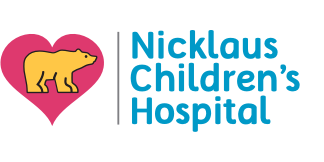- Parents Home
- Para Padres
- Allergy Center
- Asthma Center
- Cancer Center
- Diabetes Center
- Diseases & Conditions
- Doctors & Hospitals
- Emotions & Behavior
- First Aid & Safety
- Flu Center
- Food Allergy Center
- General Health
- Growth & Development
- Heart Health
- Homework Help Center
- Infections
- Newborn Center
- Nutrition & Fitness Center
- Play & Learn Center
- Pregnancy Center
- Q&A
- Recipes
- School & Family Life
- Sports Medicine Center
- Videos
- Kids Home
- Para Niños
- Asthma Center
- Cancer Center
- Diabetes Center
- Feelings
- Getting Help
- Health Problems
- Health Problems of Grown-Ups
- Heart Center
- Homework Center
- How the Body Works
- Illnesses & Injuries
- Kids' Medical Dictionary
- Movies & More
- Nutrition & Fitness Center
- Puberty & Growing Up
- Q&A
- Recipes & Cooking
- Relax & Unwind Center
- Stay Safe Center
- Staying Healthy
- Staying Safe
- Videos
- Teens Home
- Para Adolescentes
- Asthma Center
- Be Your Best Self Center
- Cancer Center
- Diabetes Center
- Diseases & Conditions
- Drugs & Alcohol
- Expert Answers (Q&A)
- Flu Center
- Homework Help Center
- Infections
- Managing Your Medical Care
- Managing Your Weight
- Nutrition & Fitness Center
- Recipes
- Safety & First Aid
- School & Work
- Sports Center
- Stress & Coping Center
- Videos
- Your Body
- Your Mind
A to Z: Clubfoot
May also be called: Talipes Equinovarus
Clubfoot is a birth defect that causes one or both of a baby's feet to turn inward and downward, giving the foot or feet a club-like appearance.
More to Know
Doctors don't always know what causes clubfoot, but it's usually recognizable when a child is born. The affected leg and foot are often smaller. The toes of the affected foot will point toward the opposite leg, and it may even appear as though the top of a foot is where the bottom should be. Attempts to move a clubfoot into the right position are usually difficult or impossible and may cause the child discomfort.
Awkward as it might look, a clubfoot doesn't cause any pain. It should still be treated, however, preferably soon after a baby is born. If a clubfoot isn't corrected, it can lead to long-term problems with physical and emotional development. Treatment usually involves a series of casts and braces to gradually move the foot into the right position. In rare cases, surgery might be required.
Keep in Mind
Treatment to correct a clubfoot may take a few years and usually involves a good deal of parental involvement. In most cases, treatment is successful and allows the child to lead a normal, active life.
All A to Z dictionary entries are regularly reviewed by KidsHealth medical experts.

© 1995- The Nemours Foundation. KidsHealth® is a registered trademark of The Nemours Foundation. All rights reserved.
Images sourced by The Nemours Foundation and Getty Images.

